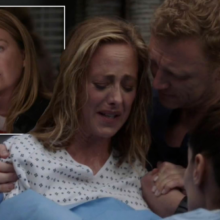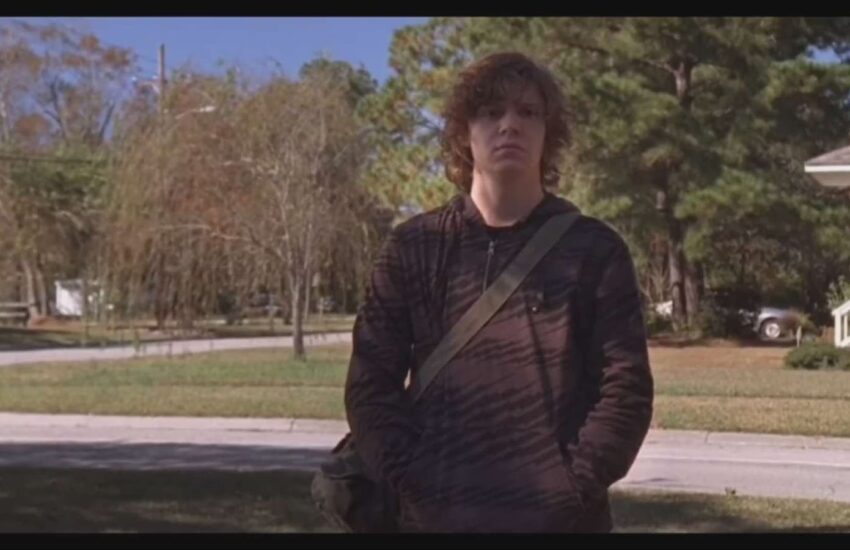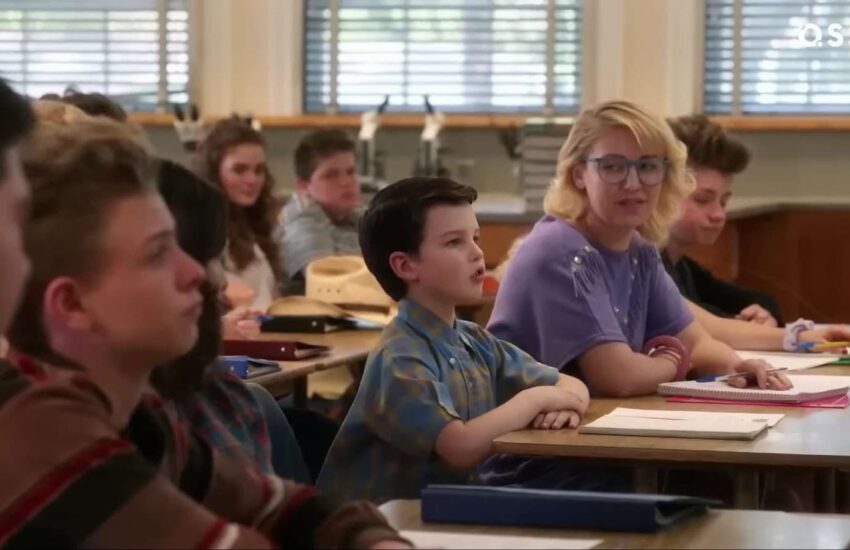
Tony Soprano’s Demise: Who Killed Him?
In the iconic HBO series “The Sopranos,” Anthony Soprano, the formidable Italian-American mob boss situated in New Jersey, has a complex life fraught with tension between his family and criminal empire.
As the show progresses, the dynamics with his spouse Carmela, offsprings Meadow and Anthony Jr., and mistress Gloria Trillo undergo numerous trials and tribulations. However, the series concludes on an ambiguous note, leaving the audience speculating who might have orchestrated the sudden termination of Soprano while he was dining with his family.
This article endeavors to delve into the various theories, evidence, and motives surrounding this captivating mystery.
Unveiling the Mysterious Assassin of Anthony Soprano
The enigmatic end of Anthony Soprano leaves viewers grappling with countless questions, including the identity of the person who organized the hit on him. Throughout its six-season duration, the show portrays Soprano’s intricate relationships with various characters, ranging from his wife Carmela to his trusted advisor Silvio Dante. Yet, the series draws to a close without revealing the person behind the orchestrated demise.
- Fan theories often point towards either Carmela, his wife, or Silvio Dante, his close friend and counselor;
- Anthony Soprano’s final moments show his sphere of trust dwindling, adding an extra layer of suspense;
- Despite the obscurity surrounding the ending, his family, Carmela, Meadow, and Anthony Jr., are seen mourning, making the whole scenario even more enigmatic.
The Lupertazzi Family and Friends: A Complex Web of Potential Culprits
Several possible factors contributed to Soprano’s fateful termination. The Lupertazzi family from New York, guided by Anthony Lupertazzi, had a vested interest in taking down the New Jersey mobster.
- Butch DeConcini, an associate of Soprano, was one of the first to propose the idea of the hit;
- The notion of taking control of the Sopranos’ criminal endeavors was financially appealing to the Lupertazzi family;
- Additional characters, like Paulie Gualtieri and Patsy Parisi, also had both motive and opportunity to plan Soprano’s downfall, as they were aware of the restaurant where the Soprano family intended to dine.
The Enigmatic Role of Paulie Gualtieri
Paulie Gualtieri, a close associate of Soprano, could potentially have played a part in his ultimate downfall.
- Prior to the climactic dinner at Holsten’s, the timing wasn’t right for executing the plan to bring down Soprano;
- Paulie displayed unexpected reluctance to attend Soprano’s supposed funeral and exhibited increasing irritation towards him during a trip they shared;
- He even recalled the time when they, along with other associates, terminated their comrade Big Pussy Bonpensiero, adding to the suspicious behavior.
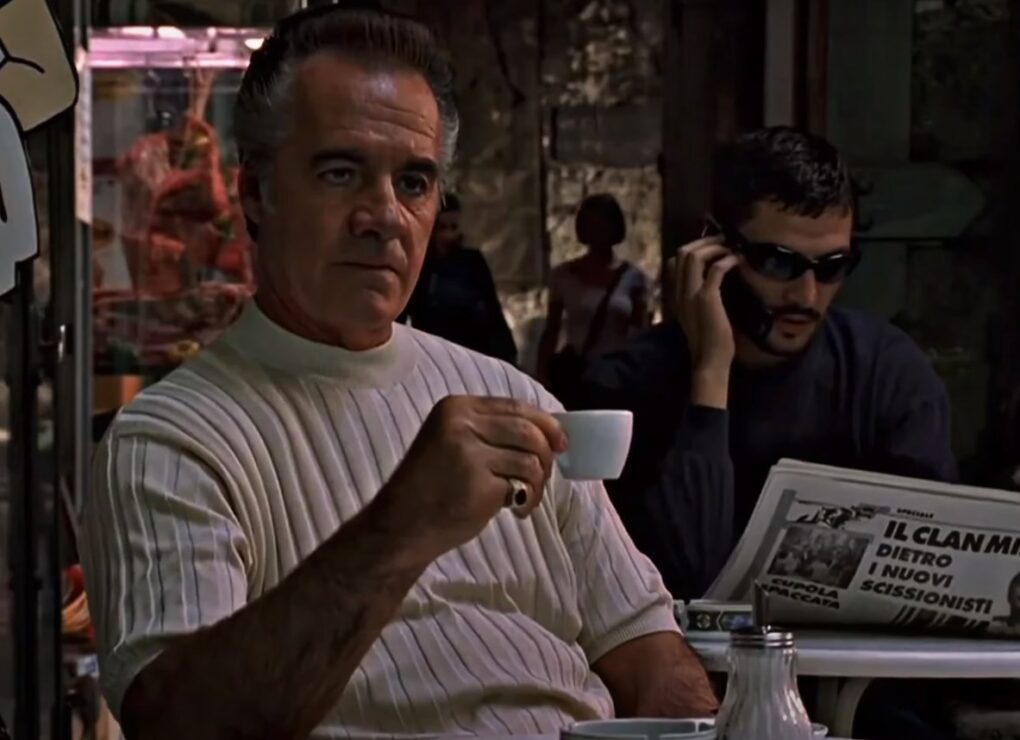
Unearthing Paulie’s Unsettling Dreams
One of the intriguing aspects of Paulie Gualtieri’s character was his haunting dream about Big Pussy Bonpensiero.
- The dream, which involved lifting weights in the middle of the night, raised questions about Paulie’s state of mind and potential guilt;
- Paulie’s unexpected hesitation to accept a crew’s leadership adds another layer of complexity to his character and potential involvement in Soprano’s demise.
The Questionable Engagement and Shifting Alliances
Soprano’s already precarious position becomes even more unstable after the loss of Silvio Dante and Bobby, his close allies.
- Paulie suggests to Patsy that the future belongs to him, possibly insinuating a change in leadership;
- Patsy’s son Patrick’s sudden engagement to Meadow might serve as a plot device, helping Patsy gain knowledge about Holsten’s, the place where the mysterious event occurs.
Unraveling Layers of Complex Emotions and Plans
Junior Soprano, agitated by Anthony Soprano’s decision to place his aunt Livia in Green Grove, harbored resentment towards his nephew. This mutual animosity might have further complicated the situation.
- Both Livia and Junior had individual reasons for disliking Anthony Soprano, which could have resulted in a lethal collaboration;
- The intricate feelings and alliances among the various characters add multiple dimensions to the quest to uncover the truth behind Soprano’s shocking conclusion.
The Complex Dynamics of Ray Curto’s Relationship with Federal Agencies
Ray Curto’s involvement with the Federal Bureau of Investigation is a perplexing narrative in the milieu of mob politics. Straddling the lines of loyalty and betrayal, Curto’s association with the FBI is a delicate dance. For the law enforcement agency, collaborating with the mob boss is a necessity, albeit one fraught with ethical complexities. Yet for Curto, the double game is the ultimate act of treachery.
Patsy Parisi’s Motivations: A Complex Interplay of Business and Vengeance
Patsy Parisi’s efforts to eliminate the mob boss stem from a combination of intricate factors. These include:
- Business Competition: Parisi perceives him as a formidable obstacle to his own economic ambitions within the criminal enterprise;
- Revenge: Parisi’s emotional motives should not be disregarded. He blames the mob boss for the termination of his brother Furio, fueling his desire for revenge.
A noteworthy moment was Parisi’s presence at SopranosCon, where conversations revolving around his motivations created a significant buzz.
The Near Miss: Who Made the Attempt on the Mob Boss’s Life?
An ominous moment unfolds as two shots pierce the air, both miraculously missing their mark. The mob boss’s wallet and juice bottle scatter onto the ground. Clayborn, in a tense scuffle, attempts to overpower him, seizing his arm to disarm him. However, the mob boss manages to regain control of his vehicle and escapes, leaving viewers pondering who could have orchestrated such a near-fatal encounter.
The Aftermath: Life Post Demise of the Crime Lord
The void left in the wake of the mob kingpin’s demise ripples through both personal and professional spheres:
- Emotional Toll: His immediate family and close associates are forced into a new reality, one where they must adapt without the cornerstone of their lives;
- Power Vacuum: The New York Mafia faces unprecedented instability. Paulie becomes hesitant, concerned about his future and family. Silvio ascends to a position of temporary leadership, igniting subterranean conflicts among Paulie’s subordinates and his underbosses.
Decoding the Final Moments of the Mob Boss
The enigmatic final scene is one that has left audiences dissecting it for years. Situated in a diner with his family, the mob boss abruptly excuses himself to the restroom. A disorienting ringing seizes his ears, and the screen transitions into an abyss of darkness. The creator David Chase has confirmed that the series finale signifies the end for the main character, bringing closure to years of speculation.
The Acting Prowess of Anthony Albanese
Anthony Albanese, who portrayed a relative of the mob boss, has been lauded for his textured and authentic interpretation of the role. After modest roles in iconic films like “The Godfather” series, Albanese found significant acclaim through his involvement in “The Sopranos,” contributing to its standing as one of the most nuanced portrayals of mob life on television.
He recently discussed his role and its impact in a New York Times interview, expressing pride in the diversity and complexity he brought to the character. Following “The Sopranos,” he continued to expand his portfolio, impressing audiences in the well-received Showtime series “Ray Donovan,” among other works.
Did Anthony Soprano Meet His End?
David Chase, the creative genius behind the iconic show ‘The Sopranos,’ finally put to rest the enduring mystery surrounding the fate of Anthony Soprano, commonly known as Tony. After keeping viewers in suspense for years, Chase confirmed that the mob boss succumbed to his fatal destiny, shot by his own Uncle Junior. This monumental revelation had multiple layers:
- The scene was orchestrated in such a way that it showed an alternative version with Phil Leotardo aiming for Tony’s arm rather than a fatal shot;
- The character of Tony was anything but virtuous. His elimination of various individuals totals up to 17, making him one of the most brutally efficient figures ever to grace television;
- The list of Tony’s victims is extensive, ranging from Christopher Moltisanti and Emil Kolar to Sean Gismonte and Dino Zerilli, among many others.
Breaking Down the Enigmatic Conclusion of The Sopranos
The last moments of ‘The Sopranos’ have fueled countless debates and endless speculation. The show’s protagonist, portrayed by the late James Gandolfini, is seen partaking in a seemingly ordinary family dinner at a restaurant. The screen then abruptly transitions to blackness, leaving viewers questioning what transpired.
- One plausible interpretation suggests that Tony met his end right then and there, in the dining establishment. The sudden blackout and commencement of the closing credits seem to affirm this grim ending, appropriate for a man perpetually ensnared in a web of violence;
- Conversely, another theory posits that Tony escaped this fate, echoing the ambiguous conclusion of the prequel film, ‘The Sopranos: A Look Back,’ which also ended in a similar enigmatic fashion.
Whatever the actual meaning behind this iconic moment, it’s clear that the finale has captivated audiences for years, inspiring a myriad of interpretations.
The Confounding Elements of the Show’s Final Season
The sixth season of ‘The Sopranos’ presented viewers with a complex narrative replete with compelling elements. While the series’ conclusion received both high praise and criticism, it’s apparent that the show’s creator intended to leave a lasting impression. One particularly bewildering element was the 11-second blackout before the credits rolled, perplexing fans and leaving them to ponder its significance.
Deciphering The Intention Behind the Unfilmed Demise
Though Tony’s terminal fate was never visually represented on screen, it’s a mistake to assume that it didn’t happen. The absence of an explicit depiction stems from David Chase’s intentional decision to leave the audience in a state of uncertainty. Comparatively, the movie ‘The Irishman’ similarly leaves viewers in a contemplative state regarding Tony’s future. The implication is that Tony’s options were severely limited—either he was destined for an early grave or a lifetime behind bars.
The Fandom’s Relentless Curiosity
For years, dedicated fans like Rich have been ruminating on the enigmatic final episodes. Signs and hints that suggest Tony’s tragic end are debated frequently, raising the question: is ignorance more comforting than the truth? Viewer opinions are eagerly awaited in the comments section, indicating the undying interest and investment in the series’ enigma.
Reflections on The Sopranos Series Finale
The culmination of ‘The Sopranos’ is undeniably one of the most discussed events in television history. Premiering on June 10, 2007, the finale was met with awe, serving as a fitting conclusion to a narrative masterpiece.
According to David Chase, the concept of Tony’s fate had been conceived in the series’ original conclusion, but what actually transpired remained a mystery that vexed fans.
The infamous ‘cut to black’ in the final episode fueled countless conversations at the time, signaling the persistent curiosity surrounding whether Tony survived or not.
Series finales are a tricky business; they can either satiate fans or leave them disillusioned. Yet, regardless of individual opinions, the ending of ‘The Sopranos’ stands as a hallmark in television storytelling, eliciting passionate discourse even years after its airing.
The Complex Figure of Anthony Soprano
Anthony Soprano, more commonly known as Tony, was the influential chief of the DiMeo organized crime syndicate, one of the prominent Five Families operating in New Jersey. Although he wielded considerable power and commanded respect within his criminal circles, Tony was a man of contradictions. On one hand, he displayed the ruthless traits required for mob leadership, exhibiting a violent disposition when necessary. On the other, he had deep emotional ties to his family and often exhibited a level of vulnerability uncommon among his peers.
Born on August 22, 1959, Anthony Soprano established himself as a formidable figure in organized crime while maintaining a public persona as a waste management consultant to elude federal scrutiny. In order to insulate himself from potential legal entanglements, he employed Christopher Moltisanti as an intermediary between him and his criminal associates. His reach extended into multiple crime families, being an affiliate of both the Lupertazzi and DiMeo organizations.
Childhood and Early Life:
- High School Companions: Tony had long-standing friendships from his high school days with people like Artie Bucco, Davey Scatino, and Tony Scavino;
- Athletic Prowess: Sal Bonpensiero once mentioned that Tony nearly attained All-County status in football and baseball;
- Early Romance: During his senior year of high school, Tony met Carmela DeAngelis, who would later become his wife.
Family Background and Personal Relationships:
- Tony was notably close to his cousin, Tony Blundetto;
- His father, Johnny Boy Soprano, was also an integral member of the DiMeo crime syndicate;
- At the age of 23, Tony was involved in his first homicide, and within eight years, he ascended to the position of permanent capo in his family;
- Ethnic Roots: He comes from Italian immigrant stock, with his ancestors hailing from Avellino, Italy, and settling in America in 1910.
Complex Emotional Landscape:
- Fatherly Concerns: Tony showed a softer side, especially with regard to his children, Meadow and Anthony Jr. (A.J.). He harbored hopes that his children would lead lives far removed from his criminal undertakings;
- Volatile Relationships: Despite the evident love for his daughter Meadow, the two had occasional spats owing to his overprotective nature;
- Successor Dilemmas: Tony always had reservations about A.J. assuming his role in the crime family due to A.J.’s lack of the calculating acumen and assertive disposition that Tony himself displayed.
Psychological Struggles:
- Tony struggled with panic attacks, an issue that seemed to run in his family;
- Initial Resistance: Despite experiencing symptoms, Tony was initially resistant to accept that these were manifestations of underlying psychological issues;
- Medical Consultations: After extensive medical evaluations yielded no physical causes for his symptoms, his general physician, Dr. Cusamano, recommended psychiatric evaluation. Thus began his sessions with Dr. Jennifer Melfi.
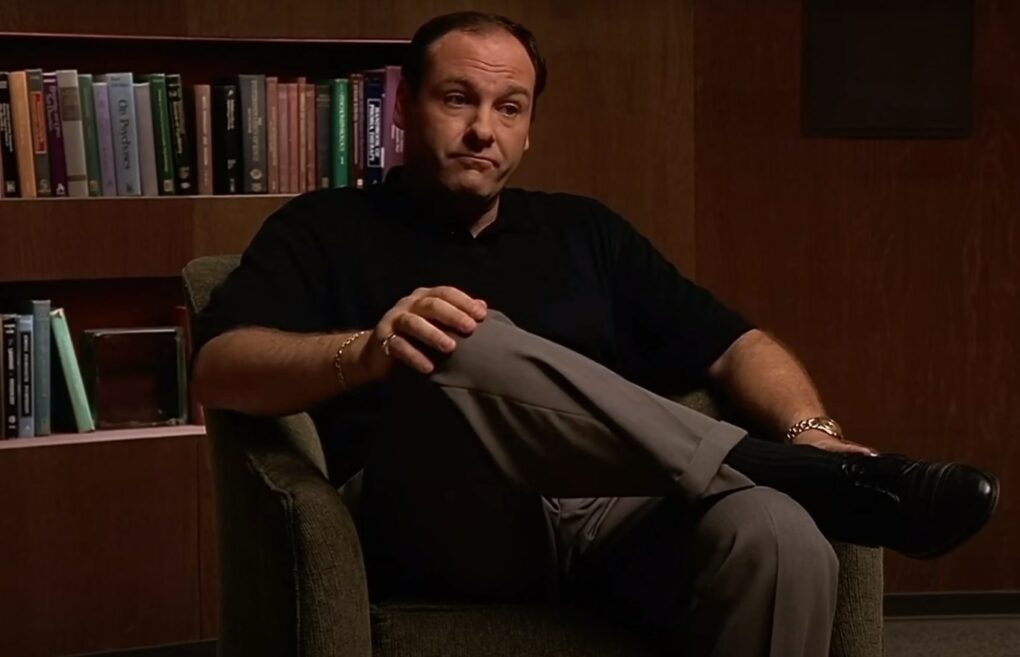
Therapeutic Journeys:
- Tony shared experiences of his early panic attacks in his therapy sessions, as revealed in the book “Fortunate Son.”;
- He opened up about feelings of guilt concerning his inability to keep his mother close to his family, a theme visited in the episode “46 Long.”;
- He articulated his internal emotional struggles through metaphors like seeing himself as a ‘sad clown.’
Twisted Psychological Trajectory:
- His relationship with Dr. Melfi had its ups and downs, including phases of acute depression and hallucinations, as seen in the episode “Isabella.”;
- At one point, Dr. Melfi’s own therapist raised concerns that her clinical involvement might have inadvertently fueled Tony’s sociopathic behaviors.
The Dream Sequences: A Window Into a Complex Mind
Dreams and hallucinations play a significant role in understanding the psyche of Anthony Soprano, a dominant figure in the underworld. The narrative frequently incorporates these psychological elements to reveal his fears and desires. For example, in a surreal experience, Anthony is convinced he has traveled to purgatory, a conviction he later shares with Phil Leotardo in December 2006.
During a therapy session in June 1998, he discloses a disturbing nightmare where a screw in his belly button symbolizes castration anxiety. Another significant episode occurred in March 1999, when lithium imbalance caused him to hallucinate. He also envisions Gloria Trillo, a past love interest who took her own life, in the episode titled “Everybody Hurts” from November 2002.
A year later, in April 2003, he had vivid dreams involving Ralph Cifaretto, which became subjects of discussion in therapy. Emotional turbulence continues to define his psychological state, especially after the loss of his nephew, Christopher Moltisanti, triggering more intense dreams in November 2007.
Reality Versus Fiction: The Characters Behind the Character
Though a fictional entity, the persona of Anthony Soprano borrows traits from real-life organized crime figures like Ruggerio “Richie the Boot” Boiardo, who was part of the Genovese crime family, and Vincent “Vinny Ocean” Palermo, another influential underworld figure.
Regarding the demise of James Gandolfini, the actor who brought Anthony Soprano to life, he succumbed to a heart attack while holidaying in Rome on June 19, 2013. Various storylines involve assassination attempts on Anthony Soprano, including episodes where Phil Leotardo or Uncle Junior take shots at him.
Anthony Soprano: The Rapid Ascent to Power
The character’s participation in the DiMeo crime syndicate came to public attention when he participated in a card game heist alongside his associates Silvio Dante and Jackie Aprile. Financial prosperity followed quickly, with him amassing considerable wealth. Legal documents indicate that at the age of 23, during the Labor Day weekend in 1982, he was responsible for the demise of Willie Overall, a lesser-known bookmaker.
The Dichotomy of Family Life
Anthony Soprano is a paradox in his private life. While his criminal activities paint him as a ruthless individual, he is also depicted as a man who deeply cares for his family. His marriage to Carmela DeAngelis, a woman he met in high school, is layered with complexities but provides a sense of grounding for him. They have two children, Meadow and Anthony Jr., also known as A.J.
Despite a turbulent relationship with A.J., who lacks the calculating nature of his father, Anthony Soprano maintains a protective bond with his daughter, Meadow. Moreover, he often treats his nephew, referred to as “Chris Moltisanti,” as an adopted son, which further expands the definition of ‘family’ for him.
Mental Health Struggles and Professional Help
The mental health challenges that Anthony Soprano faces are notable and an integral part of his character development. Initially, he was resistant to acknowledging these issues as psychological in nature. However, when physical tests such as MRI scans and blood work ruled out any organic cause, Dr. Cusamano, his general physician, referred him to Dr. Jennifer Melfi, a psychiatrist.
Dr. Melfi navigated the maze of confidentiality concerns before delving into his history of panic attacks, anxiety, and depression, thereby offering a nuanced understanding of the crime boss’s multifaceted personality.
Conclusion
In summary, Anthony Soprano is a complex character with multifaceted dimensions, excellently portrayed by the late James Gandolfini. His life straddles both the dark underworld of organized crime and a troubled but caring family life. Dreams, hallucinations, and therapy sessions with Dr. Melfi offer deep insights into his psyche.
Inspired by real-life mobsters, he became an iconic figure that shows the intersection of vulnerability and power. His story is not merely one of ascent in the criminal world but also a struggle with emotional turmoil and a continual quest for family stability, against the backdrop of his mental health challenges. This duality makes him one of the most compelling characters in the history of television drama.



